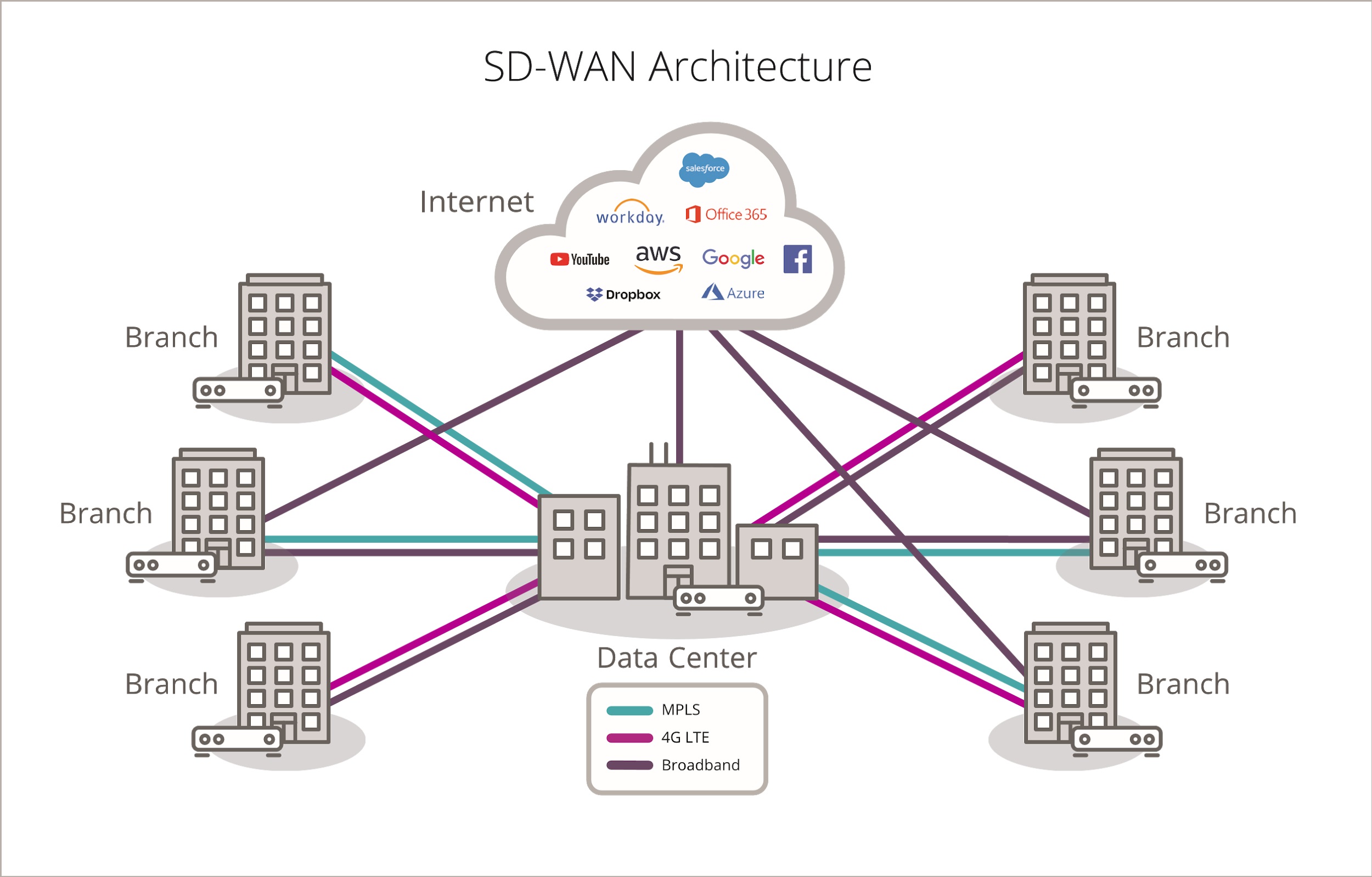
SDWAN
The Need :
The traditional WAN architecture was limited to enterprise, branch, and data center. Once an organization adopts cloud-based applications in the form of SaaS and IaaS, its WAN architecture experiences an explosion of traffic accessing applications distributed across the globe.
Digital transformation and the cloud have created the need for a more robust, Cloud-First wide-area network (WAN).
SD-WAN, delivers routing, threat protection, efficient offloading of expensive circuits, and simplification of WAN network management.
Business benefits can include the following:
Better application experience
- High availability, with predictable service, for all critical enterprise applications
- Multiple hybrid active-active links for all network scenarios
- Dynamically routed application traffic with application-aware routing, for efficient delivery and improved user experience
- Improved OpEx, replacing expensive Multiprotocol Label Switching (MPLS) services with more economical and flexible broadband (including secure VPN connections)
Security
- Application-aware policies with end-to-end segmentation and real-time access control
- Integrated threat protection enforced at the right place
- Secure traffic across broadband Internet and into the cloud
- Distribute security to the branch and remote endpoints with NGFW, DNS security, and NGAV
Optimized cloud connectivity
- Seamless extension of the WAN to multiple public clouds
- Real-time optimized performance for Microsoft Office 365, Salesforce, and other major SaaS applications
- Optimized workflows for cloud platforms such as Amazon Web Services (AWS) and Microsoft Azure
Simplified management
- A single, centralized, cloud-delivered management dashboard for configuration and management of WAN, cloud, and security
- Template-based, zero-touch provisioning for all locations: branch, campus, and cloud
- Detailed reporting of application and WAN performance for business analytics and bandwidth forcasting





